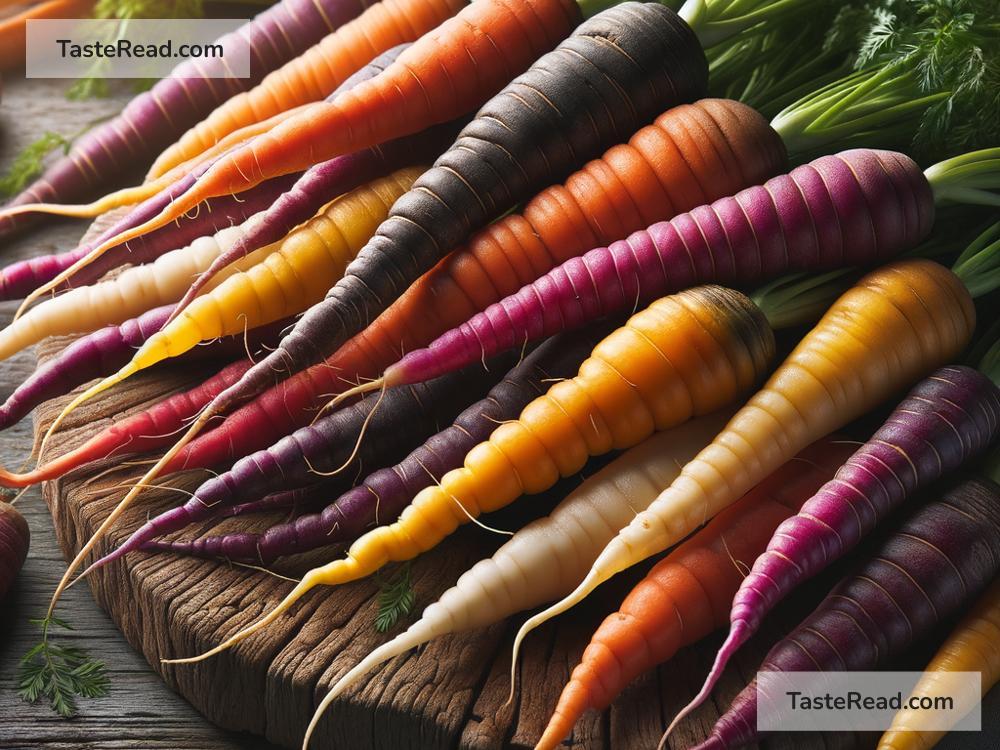Why Carrots Come in Multiple Colors
When you think of a carrot, you might imagine the long, orange vegetable that is crunchy, sweet, and full of vitamins. But did you know that carrots come in many more colors than just orange? You can find carrots in purple, yellow, red, white, and even black! These colorful carrots are not a new invention—they have been around for a very long time. Let’s explore why carrots come in so many different colors and what each one is all about.
The History of Carrots
Carrots originally came from a plant called Daucus carota, which is native to Afghanistan and other nearby regions. Thousands of years ago, carrots were not orange. In fact, the first carrots were purple, yellow, or white! These were wild carrots that grew in nature. Over time, humans learned how to grow and breed carrots to make them tastier and easier to eat.
Orange carrots became popular hundreds of years ago in Europe, especially in the Netherlands during the 17th century. Some historians believe that Dutch farmers purposely grew orange carrots as a tribute to their royal family, the House of Orange. Others think orange carrots became popular simply because they looked bright and inviting. Either way, the orange carrot quickly became the most common type, and we still see it everywhere today.
Why Do Carrots Come in Different Colors?
Carrots come in multiple colors because of natural pigments in their roots. These pigments, called phytonutrients, are compounds that give plants their color and help protect them. Different types of pigments cause carrots to be different colors:
-
Orange carrots get their color from beta-carotene, which is an important nutrient for our eyes and skin. Beta-carotene turns into vitamin A in your body, which helps you stay healthy.
-
Purple carrots are colored by anthocyanins, the same pigment that makes blueberries and red cabbage purple. Anthocyanins are antioxidants, which means they help protect your cells from damage.
-
Yellow carrots get their bright color from xanthophylls, which help keep your eyes strong.
-
Red carrots contain lycopene, a powerful antioxidant that is also found in tomatoes and watermelon. Lycopene may help protect your heart and prevent certain types of illnesses.
-
White carrots don’t have much pigment, so they have a pale or cream-like color. While they may not be as rich in nutrients as other carrots, they are still crunchy and tasty.
-
Black or dark purple carrots are a deeper shade of purple because they have even more anthocyanins than regular purple carrots.
As you can see, the color of a carrot is linked to the nutrients and natural chemicals inside it.
Are Different-Colored Carrots Healthy?
Yes! All carrots are healthy and packed with vitamins, minerals, and fiber that your body needs. However, the nutritional benefits can vary depending on the color of the carrot. For example, orange carrots are especially high in beta-carotene, while purple carrots have more anthocyanins. Eating a variety of carrot colors can be a fun and effective way to make sure you get different nutrients.
Another great thing about carrots is that they are low in calories, so you can snack on them without worrying about over-eating. Whether you enjoy them raw, cooked, roasted, or juiced, carrots are a great choice for a healthy diet.
Growing and Eating Colorful Carrots
Today, farmers and gardeners can grow carrots in all kinds of colors. These colorful carrots are becoming more popular as people discover how unique and beautiful they are. You might see rainbow packs of carrots at grocery stores, farmers’ markets, or even on restaurant menus. Sometimes, chefs use colorful carrots to make dishes look exciting and creative.
If you want to grow your own colorful carrots, it’s easy to do! Carrots grow underground, so all you need is some soil, seeds, water, and sunshine. You can find carrot seeds for purple, yellow, red, and other colors online or at gardening shops.
When it’s time to eat colorful carrots, you can use them in any recipe just like regular orange carrots. Imagine adding purple carrots to a salad or serving roasted yellow and red carrots as a side dish. These bright colors can make even simple meals look like works of art. Plus, they’re fun to eat for both kids and adults!
The Beauty of Diversity
Carrots come in multiple colors because of their rich history and the diversity found in nature. Each color offers something special, not just for your taste buds but also for your health. By exploring different kinds of carrots, you can learn more about the world of plants and enjoy new flavors at the same time.
The next time you see a purple, yellow, or red carrot, don’t think of it as strange or unusual. Instead, think about the fascinating journey of carrots over thousands of years—from wild roots in Central Asia to the colorful varieties we enjoy today. Carrots are a perfect example of how nature can be both beautiful and useful. So, go ahead and try a rainbow of carrots, and enjoy every bite!
This blog post helps us appreciate the simple yet wonderful carrot—proof that even the most everyday foods have an amazing story behind them.


